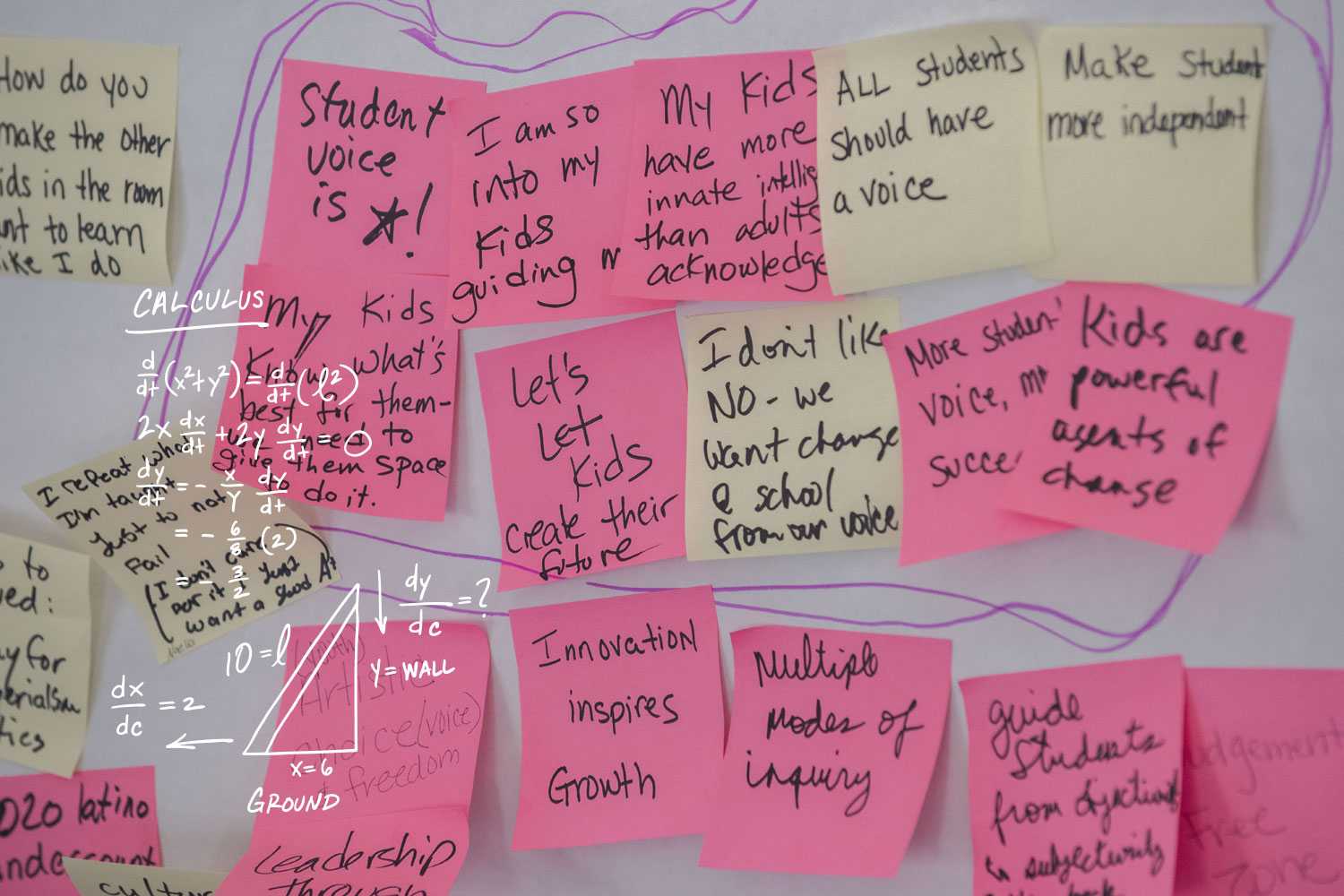3. Active communication builds support, buy-in, and learning.

Maintain your commitment to transparency and inclusion throughout the journey.
Fact:
An “elevator pitch” is a compelling 30-60 second statement that tells a listener why an organization is special and why it deserves their support.
Source: the balance careers
Collaboration, transparency, and inclusion are essential for designing an innovative school; those values are just as essential throughout the process of implementing your design. Thoughtful, skilled, and committed educators must be at the center of the work of implementation, so their expertise and leadership are fully reflected in the operations of the school. At the same time, young people, families, and community partners need to be involved at every step.
With so much happening on the path to implementation, you may need to create new systems to communicate and coordinate across your team. If you’re redesigning an existing school, you’ll need to engage members of the school community who have been less intensively involved and may feel out of the loop or even skeptical. Project planning tools can help. Perhaps you’re familiar with some standard project planning software tools or processes; if so, those can be good starting points. If you don’t have experience with those resources, do some research and choose a system that helps you and your team share documents and information, monitor progress, and stay on track.
You’ll also need to get really good at explaining your school concept to people beyond your immediate circle: local elected and education leaders, officials, regulators, potential supporters and funders, community partners, journalists, prospective teachers, and, of course, students and their families. If you’re starting a new school, people will mainly be curious about what will make your school special, and what needs you’ll meet in the local education landscape. For a redesign, you’ll need to explain all that, and you’ll also need to make a compelling case for the difficult work of change.
School implementation is challenging and sometimes hectic, full of unexpected setbacks and opportunities. The temptation to revert to status quo solutions, to “do it this way because that’s the way it’s always done,” will sometimes be strong. Ongoing communication with young people, families, and key allies will help your team stay true to your innovative vision and continue to learn.
A learning organization is one “where people continually expand their capacity to create the results they truly desire, where new and expansive patterns of thinking are nurtured, where collective aspiration is set free, and where people are continually learning to see the whole together.”
PETER SENGE
The Fifth Discipline
Dive Deep
![students and teacher together]() Collaborative Professionalism
Collaborative ProfessionalismIn an interview in Educational Leadership, Michael Fullan discusses how good autonomy and good teamwork, along with a deep focus on students, can come together to make progress possible.
Read![student smiling]() Creating Inclusive Systems
Creating Inclusive SystemsAn effective school team creates plans and systems so everyone knows what has to be done and who will do it. This video from New Leaders shows how.
Watch![a student working]() Choosing a Project Planning Tool
Choosing a Project Planning ToolThis article, published by the makers of Hive, describes some of the major commercial project management software tools and offers tips on choosing the right one.
Read![people working at a table]() An Investor Pitch Deck
An Investor Pitch DeckA pitch deck is a great asset for making your case to funders and partners. This article, written for business startups, has useful pointers for school designers, too.
Read
Analyze
To help people understand and get excited about your school vision, you will need to be able to describe it briefly and vividly, in terms that matter to them.
Step 1 – Research
Look back over the work you’ve done in previous modules and identify the 2-3 major aspects or values of your school design that will define the core of the student experience. Working individually or in small groups, craft a short description, or “elevator pitch,” for your school that communicates those qualities. As background, review the websites of some schools in your area to see how they describe themselves to the general public, in recruitment materials for students and families, in job postings, and elsewhere. How will your school be special?
Step 2 – Reflect
Review all the elevator pitches with your team and discuss these questions:
- How does each elevator pitch bring out what will make your school special? Choose one, or work together to create a new one that combines the best aspects of each.
- How can you communicate those core elements to students, families, faculty, and others?
- What definitional elements or values do you need to prioritize and protect, no matter what, throughout the implementation process?




